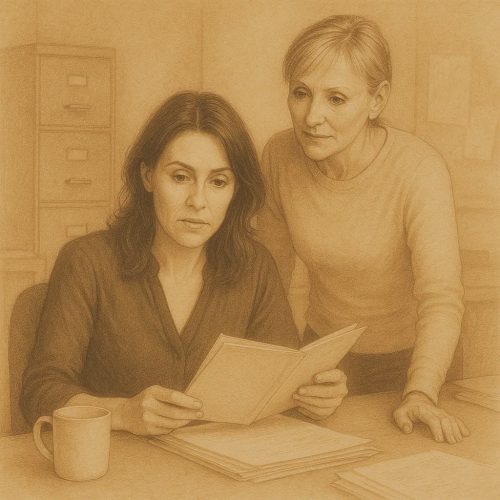4-minute read
What is Scott and Bailey? A Crime-Filled Ride You Kept Watching
If you’re tired of glossy police dramas, this gritty Manchester series hit differently. From 2011, it captured the chaos, mess, and real emotions of police work. The opening sequence blasts with jagged guitars and rapid cuts, pulling you in fast. No shiny uniforms or Hollywood BS—just raw, authentic grit. The pacing? Snappy and relentless. You kept watching because it delivered real stories and unpredictable twists. It’s a show that hooks you right from the start, thanks to its punchy style and hard-hitting soundtrack.
Main Characters and Their Quirks
Suranne Jones – DS Rachel Bailey
A fiery, reckless cop with wit to spare. Impulsive and rule-bending, she’s always on the edge. Keeps us hooked with her chaos and quick comebacks.
Lesley Sharp – DS Janet Scott
The calming, strategic voice of reason. Calm, meticulous, with quiet wisdom. Balances Rachel’s fire with steady logic. The sensible one we all want on our side.
Amelia Bullmore – DCI Gillian “Gill” Murray
Witty and commanding. She’s got a dry sense of humour and a hidden rebellious streak. Runs the squad tough but cares beneath the surface.
Nicholas Gleaves – DI Andy Roper
Loyal, friendly, and utterly clueless about office politics. The nice guy caught in the chaos who often calls out the absurdities.
Danny Miller – DS Rob Wootton
Joined in later seasons, young and idealistic. Clashes with Rachel but brings fresh energy. Slightly naive, but street-smart enough to ruffle feathers.
Pippa Haywood – DCS Julie Dodson
Smart, cautious, politically savvy. The voice of the institution trying to keep a lid on chaos while fighting her own battles.
And the villains? Ruthless Helen Barlow, played by Tracie Bennett, among others. But the show’s shades of grey mean nobody’s entirely innocent or guilty.
Production Style and Vibe
This show started in a Manchester wine bar where Suranne Jones and Sally Wainwright grumbled about the lack of strong female detectives on TV. Producer Nicola Shindler loved the idea. Filming? Raw and gritty, on location in Manchester. Handheld cameras capture every nuance, sound design adds industrial hums and city noise. The dialogue feels natural, not scripted—Jones and Sharp trained with real detectives, mimicking habits and speech ticks. Janet’s habit of pausing before entering rooms? Totally believable. It’s all about showing police work’s real grind, not Hollywood gloss.
How the Show Evolved Over Its Run
Series one had six cases, but beneath that, characters’ personal lives simmered. Rachel’s affairs, Janet’s family drama felt genuine. By Series two, it focused more on the personal. Ratings shot past 7 million in Series 3, which tackled kidnap cases and moral dilemmas head-on. Series four darkened with issues like grooming gangs. Rachel’s relationships grew more complicated. Later, longer episodes with tighter stories aired, partly thanks to budget cuts. Women writers brought fresh perspectives, sharpening the storytelling even more.
Themes, Tone, and Voice
Realism is king here. Diane Taylor’s background in actual crime shows in every story. Think stalking, neglect homicides, and moral grey areas. The tone switches from sharp wit to emotional punch. Humor acts as a buffer against the brutal grind. Scenes mix seriousness and levity, creating a raw, believable world that feels genuine, not scripted. It’s crime drama without the fantasy.
Memorable Episodes and Moments
“Blood and Silence” (1×02): Janet shows real compassion interviewing a dying witness, highlighting her bond with Rachel.
“Killing Me Softly” (2×08): A heartbreaking look at domestic violence. Rachel sees herself in a suspect, personal and uncomfortable.
“The Enemy Within” (3×08): Gill interrogates a corrupt cop in tense minutes. Critics called it “Line of Duty lite”.
“Dead to Me” (4×04): Rachel races through Manchester in a foot chase, exposing systemic flaws.
“Ghost” (5×02): Janet revisits an old case, merging experience with a tinge of regret.
Series ends quietly, with a coffee chat that sums up friendship and resilience—no heroics, just real life.
What Its Impact Looks Like
The pilot drew 9.1 million viewers, smashing expectations on Sunday nights. Critics praised its sharpness, blending soap-opera drama with gritty realism. It snagged BAFTA nominations in 2012 and 2013, solidifying its place in TV history. Beyond the crime plots, it drew audiences with well-developed characters. Its influence? Huge. It inspired series like “Broadchurch” and international remakes, like Canada’s “The Detail”.
Its Lasting Effect and Cultural Footprint
Fans still visit Manchester filming spots, snapping photos and trading memes. Hashtags like #DontBeAJanet or #Gillisms keep it alive online. Gill’s one-liners? Meme gold. Merchandise like “Rachel’s Flat-White Chaos” cups fly off shelves. It helped redefine how women in crime dramas are portrayed, inspiring future shows and fandoms to push for more authentic, layered characters.
Home Media and Streaming
Series one hit DVD shelves five weeks after airing, selling over 80,000 copies early on. Remastered editions with extras followed. Now? Streaming platforms like ITVX let you binge in HD. Extras include behind-the-scenes interviews, podcasts, and books. Suranne Jones and Amelia Bullmore share behind-the-scenes tales, adding to the charm and authenticity.
Final Thoughts
Scott and Bailey endures because it refuses to romanticize policing. Characters stumble, villains are complex, victories bittersweet. It’s about real progress and friendship. Their final café chat sums it up—simple but meaningful. Fans still re-watch, and even hints of a reunion remain. That’s why it’s a genuine classic of gritty, honest TV storytelling.
